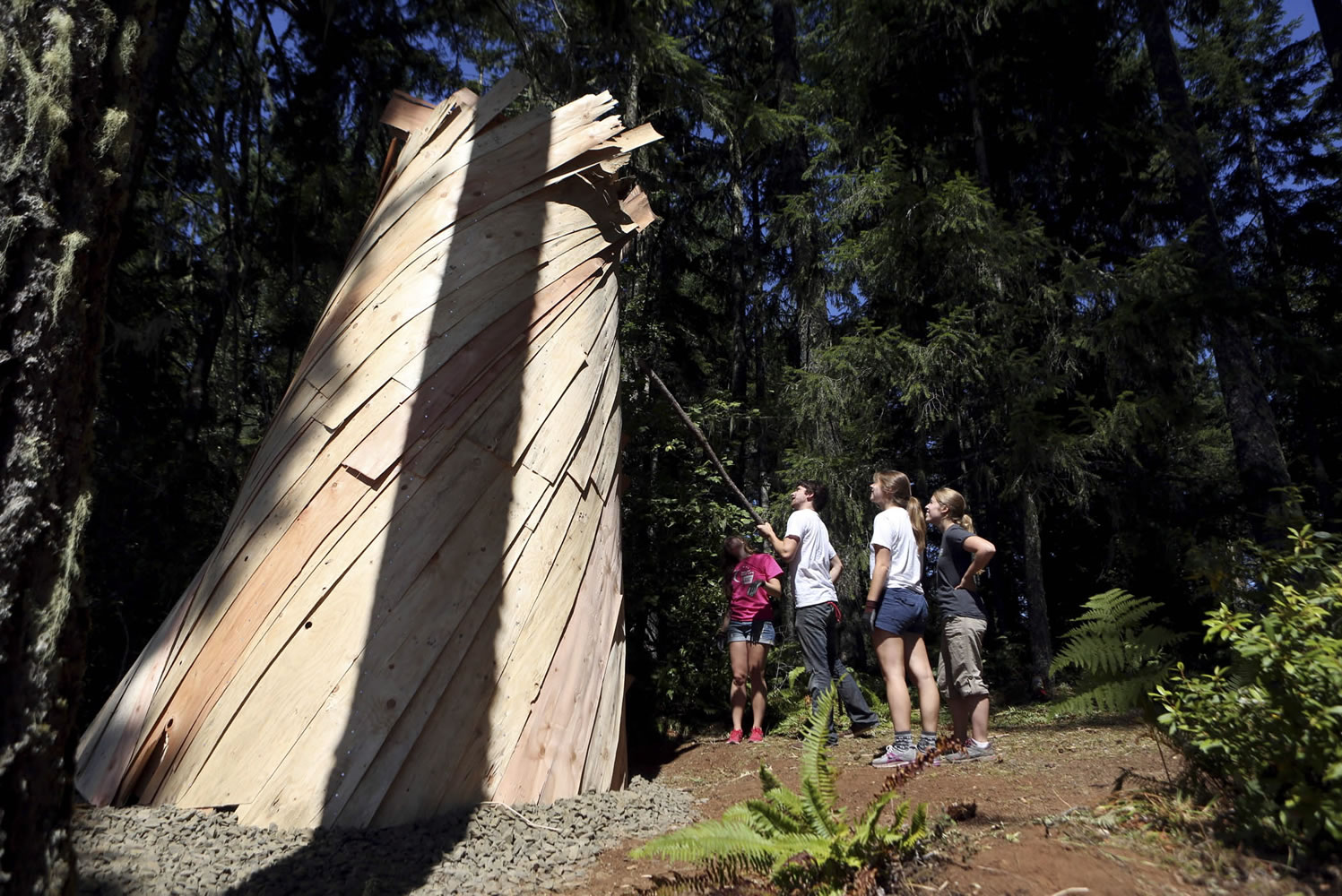EUGENE, Ore. — Imagine telling a group of architects, simply: Build something.
It should be interesting and useful. It needs to sit out in the Oregon forest. You don’t get to use power tools. You’ve got fewer than 10 days to complete the project.
And, we’re not going to tell you what it is.
That was the group assignment 14 architecture students from around the world were given a few weeks ago in a summer design workshop run by London’s Architectural Association at the University of Oregon.
With that open-ended charge, the students got to work conceiving, designing and building a 16-foot-tall camera obscura — kind of a walk-in camera — that now sits on a ridge overlooking the forest on a tree farm southwest of Eugene.
They completed the structure on Aug. 19.
“We started with a tour of the forest,” said Kristin Cross, a Eugene native who teaches at the Architectural Association, an independent institution known for an emphasis on theory and design. From there students discussed concepts and ideas and came to the idea of the camera obscura, a concept known as far back as Aristotle.
“It’s very rare that students have an opportunity to work with architecture at full scale,” said Jason Griffiths, an architecture professor at Arizona State University who was one of the workshop leaders. “These students can try things and make mistakes and make decisions, based on the real thing.”
The real thing in this case — the camera obscura, which is Latin for “darkened room” — turns out to be a wigwam-shaped swirl of Douglas fir veneer scraps donated by Rosboro Lumber Co. after the students toured a plywood mill.
On one wall of the structure, which can hold just about four people inside, is a tiny window, into which is set the lens from a pair of reading glasses.
The lens focuses a large upside-down image on the opposite wall of a bucolic view across the valley — at least once your eyes adjust for a few minutes to the darkness inside.
The student designers were drawn to the idea of using a simple, historically interesting device to focus people’s attention on the beautiful view from the ridge. Built from local materials, the structure reflects the shape of both the timber industry’s iconic wigwam burners and that of rotting stumps in the forest.
After some discussion among the student builders, the circular ceiling of the finished structure was fashioned so that it could be opened with a rope and pulley, allowing people inside to look up and enjoy the forest canopy.
Architectural theory is one thing. Building something in the Oregon woods with your bare hands is something else again, said Shai Akram, a product designer from London who signed up for the workshop.
“Coming here made me remember lots of things from my childhood, like how to draw a perfect circle using a piece of string, that are useful when you’re away from your Mac,” she said.
Even once a design and the materials were agreed on, building the camera obscura was not a trivial process.
“We expected to have green, freshly milled pieces (of veneer),” said Justin Austen, an undergraduate UO student in architecture. “These are stiffer. But we took a couple sheets and were able to bend them over a frame.”
“So here they are, doing this with their own hands,” Griffiths chimed in. “You find out what the material is capable of by doing it.”
The structure sits on a ridge just off a logging skid road in the middle of the Bauman Family Tree Farm, a commercial tree-growing operation whose resident owners, Tom Bauman and his wife, Lindsay Reaves, use the farm for educational programs put on by the nonprofit organization Forests Today and Forever.



